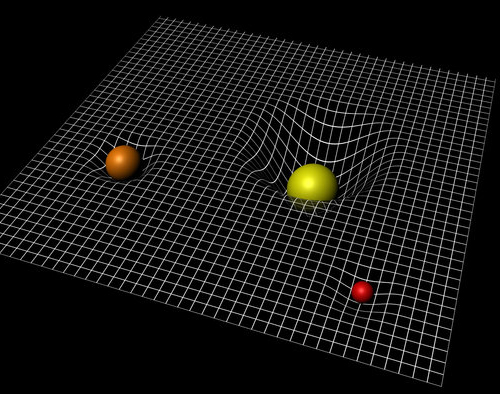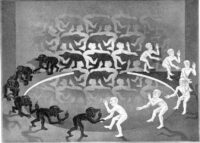Now that the election is over, we can attend to other matters of gravity. Literally.
Gravity is so ever-present in our lives we rarely think about it, except perhaps, when we slip and fall. The effects of gravity are well understood, beginnings with Newton’s apple and now extending to our observation of gravity waves propagating across space and time. Despite such observations, however, gravity itself remains largely a mystery.
What is known is that every object in the universe has gravity, at least those objects large enough to actually be observed, such as galaxies, stars, planets and the like. The tiniest of “objects” may not actually be objects at all, merely vibrating fields or “strings” of energy of no solidity whatsoever–harmonic chimes of being. Reconciling the force of gravity–one of the four fundamental forces governing matter–with what happens at the very smallest, quantum level of existence continues to elude us. Physicist Steven Hawking sought to establish a Grand Unified Theory precisely to provide that reconciliation, but it eluded even his remarkable genius.
Setting aside that lofty pursuit, understanding the gravity we know–the force which holds us to the ground and defies attempts to float above it–itself provides rather remarkable imaginings. Many people misunderstand; gravity is not magnetic, though it is convenient to think of it in that fashion. The force of gravity is interpenetrating, non-obstructed and pervades all of space time, acting on every object in the universe at varying degrees based upon mass and distance. Gravity, as Einstein taught, is the space-time distortion caused by the mass of an object: dimples in space-time.
Dimples are easy to visualize; we’ve all known people whose dimples appear when they smile. Dimples can be diagrammed topologically as a type of distortion in a two-dimensional surface. If we imagine space of two dimensions as a flat rubber surface upon which we place a heavy round object, the form of a puckered dimple is easy to visualize. This get’s harder when we imagine space in three dimensions.
A heavy round object placed in three dimensional space also creates a dimple, but that dimple does not look the same as one on a flat cheek. A three dimensional dimple is a point puckered on all sides, which for a round object means all the surrounding space. Just as lighter objects placed on the rubber sheet on which our heavy round ball sits will fall towards that round ball due to the dimple it creates in two dimensional space, so too will objects fall towards the heavy round ball in three dimensional space. This is the gravity we know; the response of objects in the distortion of space-time created by the mass of large objects.
Space-time is so-called because gravity not only distorts space, but also time. This was at the heart of Einstein’s discoveries, and transformed the way we think about time. The greater the mass of an object, the greater the distortion of space-time. Really big dimples, like super-massive black holes, provide the gravitational glue which holds galaxies together. Yet here’s a paradox; the gravity of black holes is so great that the matter comprising a black hole is itself crushed into a infinitely small, massive dense point called a singularity–the ultimate dimple. The nature of matter, time and space within a black hole, at present, is unknown and all but unimaginable.






Be First to Comment